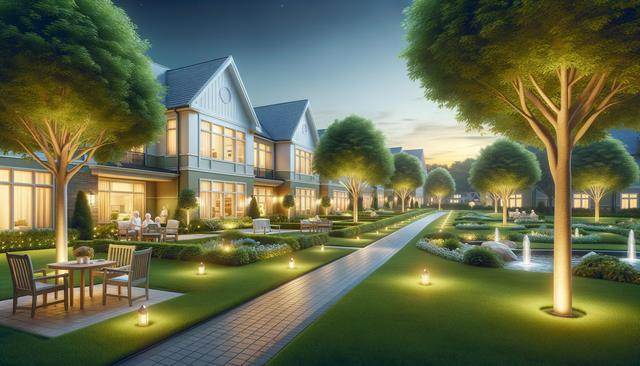What Are Independent Living Communities?
Independent living communities are designed for older adults who are generally able to live on their own but want the convenience of living in a community with others of similar age. These communities often cater to individuals aged 55 and older and provide a range of services and amenities that make day-to-day life more enjoyable and manageable. Residents typically live in private apartments or cottages and have access to shared spaces for dining, recreation, and fitness.
These communities are not the same as assisted living facilities. Instead, they are ideal for seniors who do not require medical care or constant supervision but appreciate a setting where help is available if needed. Many adults search for options like “senior living communities near me” to find a place that is close to family and familiar surroundings, while still offering the benefits of a communal lifestyle.
Benefits of Choosing an Independent Living Community
There are many advantages to moving into an independent living community. One of the biggest is the sense of community and social engagement that comes from living near peers. These environments offer a variety of social activities and events, making it easier for residents to form friendships and stay mentally and emotionally engaged.
Some notable benefits include:
- Maintenance-free living (no more yard work or home repairs)
- Access to on-site amenities like fitness centers, pools, and clubhouses
- Group outings and planned social events
- Dining options that cater to various dietary needs
- Security features for peace of mind
For many, the availability of “55+ communities with amenities” is a key reason to consider this type of housing. These features allow older adults to maintain a high quality of life while enjoying the freedom they value.
Affordability and Housing Options
One of the common concerns when exploring independent living is cost. Fortunately, there are a growing number of “affordable retirement communities” that cater to a range of budgets. Costs can vary based on location, services offered, and the type of housing (e.g., apartment vs. cottage). Some communities offer tiered pricing, allowing residents to pay for only the services they use.
It’s essential to consider what is included in the monthly fee. Some communities include utilities, meals, and transportation, while others may charge separately for these services. When touring potential places, be sure to ask about:
- Monthly rental fees and what’s included
- Meal plans and dining options
- Transportation services
- Lease terms and move-in costs
Finding the right balance between affordability and quality is key, and there are many reputable communities that offer excellent value for their cost.
Location Matters: Finding the Right Community
When beginning the search, many people type “senior living communities near me” into search engines to find options nearby. Proximity to loved ones, medical facilities, shopping, and entertainment can significantly impact your experience. Living in a familiar area can also make the transition smoother and less overwhelming.
Some seniors prioritize being near children or grandchildren, while others may prefer a location with better weather or more recreational opportunities. Considerations when choosing a location include:
- Climate and weather preferences
- Access to healthcare providers
- Availability of public transportation
- Local culture and community vibe
- Cost of living in the area
Visiting multiple communities and spending time in the surrounding neighborhood can help you get a feel for what life would be like there, making it easier to make an informed decision.
Amenities That Enhance Quality of Life
Modern independent living communities are equipped with a wide range of amenities designed to support an active and fulfilling lifestyle. These “55+ communities with amenities” often include features that promote wellness, creativity, and socialization, making them appealing to a wide variety of residents.
Common amenities you might find include:
- Fitness centers and walking trails
- Art and craft rooms
- Libraries and media centers
- Community gardens
- On-site salons and spas
- Event spaces for gatherings and celebrations
These features not only provide convenience but also encourage residents to stay active and involved, which can have positive impacts on both physical and mental health. When evaluating communities, think about which amenities matter most to your lifestyle and interests.




Leave a Reply